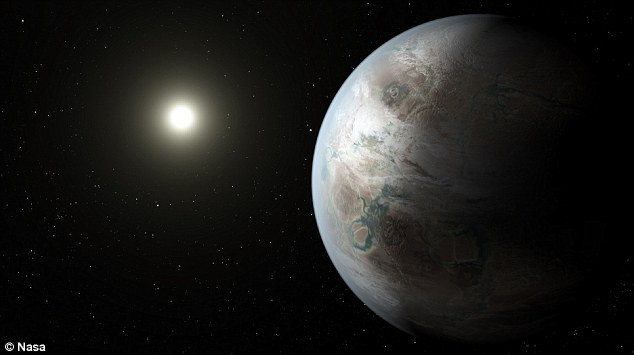Earth 2.0: Nasa announces discovery of new planet with 'substantial opportunity' for alien life

Nasa has announced the discovery of a planet sharing many characteristics with Earth, and a possible site of extraterrestrial life.
The planet, called Kepler 452b, is described as a "bigger, older cousin" to our own planet and is the smallest planet so far that orbits in a habitable zone around a star similar to the Sun.
The planet is 60% larger than Earth, and its orbit is only 20 days longer than our planet's.
Scientists believe that its 6 billion years in the "habitable zone" near the star, which has a similar mass and temperature to the Sun, is more than enough time for life to have evolved in its oceans or on its surfaces.
The habitable zone is defined as a region near a star where temperatures are right to enable water to form, regarded as essential for the creation of life similar to that on Earth.
Its star is 1.5 billion year older than our Sun, meaning it is larger and brighter, as stars grow as they age, meaning Kepler 452b receives 10% more energy than Earth. Scientists said this could afford a glimpse into a drier future for our own planet, as oceans evaporate and the surface heats up.
"Kepler 452b could be experiencing now what the Earth will undergo more than a billion years from now," said Doug Caldwell, a Seti Institute scientist on the Keplar mission.
Nasa announced the discovery alongside that of 12 other possibly habitable exoplanets, or planets that orbit a star other than the Sun, and 500 others in total.
Jon Jenkins, Kepler data analysis lead at NASA's Ames Research Center in Moffett Field, California, who led the team that discovered the planet, said: "It's awe-inspiring to consider that this planet has spent 6 billion years in the habitable zone of its star; longer than Earth. That's substantial opportunity for life to arise, should all the necessary ingredients and conditions for life exist on this planet."
Jenkins said that Kepler 452b was likely to have stronger gravity than our own, and to be rocky, with active volcanoes.
© Copyright IBTimes 2025. All rights reserved.






















